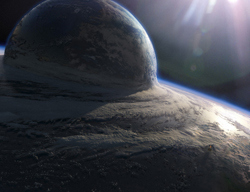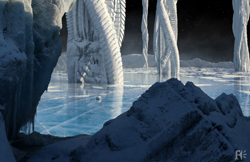Steven Lyle Jordan's Blog, page 63
September 9, 2012
Ebooks aren’t marketing novelties anymore

Steven Lyle Jordan
Last week marked my official bid of farewell to my membership at MobileRead.com, an ebook-dedicated site that I have participated in, as a member and a bookseller, since 2006.
MobileRead was a great source of information about the relatively new market of ebooks, when I was first trying to figure out how to get my books out to the world. Based on weeks of research, then numerous questions about formats, pricing, web venues and quality issues, I learned enough to be able to begin my part-time career as a novelist by selling in ebook formats. I was greeted enthusiastically by MR members, who eagerly checked out my novels, made comments, congratulated me on my customer-friendly packaging and service, and wished me well in my endeavors.
That was six years ago. Things have changed with the passage of time.
When I first sold my ebooks, I did so on my own site because there were no sites selling ebooks by non-professional or independent writers. Today, there are any number of websites that allow independent authors to sell their ebooks, Amazon.com being only the most widely-known among them. Ebooks are now recognized pretty much globally; no longer are they a strictly high-tech big-money rat race phenomenon, they are becoming a resource that people at almost any level and culture can enjoy. Ebook reading gear is more numerous and diverse, and the process of obtaining or even creating an ebook has become easy enough for anyone to handle.
As well, the dividing line between professionally-published authors and independents has thinned. Today, an independently-produced novel can stand its own in quality and popularity with a novel produced by the major publishing houses, and the public is slowly learning to appreciate independent content.
And finally, those who appreciate ebooks no longer feel the need to support or recommend an author or their books solely for their connection to ebooks. And although there are still issues of price, quality and marketing methods to work out, the novelty has largely worn off. Ebooks have become just another product; and I have become just another author. Such is the case with anything that grows from a novelty, to a phenomenon, to an average commodity.
As a result, the things that originally drew me to MobileRead are no longer relevant to my needs as an author. As my sympathetic market has decreased there, I’ve come to realize that I need to concentrate on the more general market elsewhere. And as I’ve come to realize that I wasn’t learning anything new or relevant on the site, I must investigate book-selling resources from more conventional quarters. It’s time to go mainstream and leave the niche marketing behind (science fiction is enough of a niche as it is, thank you).
So, we move to the next chapter. So long, MobileRead… and thanks for all the fish.


August 27, 2012
A decade later, you still can’t take the sky from me
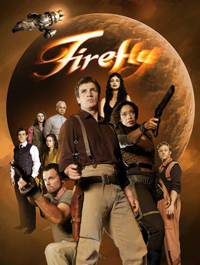
Firefly (courtesy Mutant Enemy/20th Century Fox)
It seems like only a few years back that Joss Whedon gave us a new way to look at future fiction that resonated with a lot of people, weirded out a small but influential group of people, and was unseen by most people.
I am, of course, referring to Firefly, the futuristic retelling of America’s post-Civil-War period… cowboys in space. At least, that was the prominent outer skin of the series; but as fans discovered, Firefly had more layers underneath than an onion from the seventh dimension.
Firefly presented us with a future that sounded more workable and believable than any future depicted by Star Trek, Stargate, Galactica or almost any other space-faring TV society: The future of the human race, having abandoned the used-up Earth of their ancestors, had discovered a single system of multiple-multiple planets and moons, giving them the chance to settle on and terraform each of them into worlds of their desire. Like the development of the United States, some planets benefited from their available resources better than others, resulting in rich and beautiful cities on one planet, and desolate no-collar existence on another. And after their own war of unification, the planets were settling into an uneasy alliance, while those who didn’t like the new order tried to eke out an existence on their own, away from authority figures and politics they didn’t appreciate.
We were introduced to the crew of Serenity, a Firefly-class small freighter: Captain Mal Reynolds, survivor of the losing side of the war and adamant about his right to live as he chooses; Zoe, his second-in-command in the war and faithful second aboard Serenity, and her happy-go-lucky husband Wash, Serenity’s crack pilot; Jayne, hired brute; Kaylee, Serenity’s lovable mechanic; Inara, a registered companion (read: Legal prostitute) using Serenity as her home base, and with a soft-spot for Mal; Shepherd Book, a preacher with a secret past; and the Tams, Dr. Simon who rescued sister River from Alliance experiments aimed at making her some kind of super-weapon, and now uses Serenity to hide from the Alliance in return for offering his doctoring skills to the crew.
And if this diverse cast weren’t enough, we were then treated to stories showing the challenges of living on frontier worlds that seemed so familiar, because they were so totally like the challenges of living in our own frontiers, with familiar capitalists, white collar workers, blue-collar workers, poor workers, con men, policemen, drifters and scoundrels everywhere. Joss Whedon, the show’s creator, is a master-storyteller, and his team jam-packed the characters with layers and histories that made them more well-rounded than many people I know in real life.
And these people weren’t dealing with existential issues like parallel dimensions or the cosmic impact of life; they were trying to make a living, find love, recover from failure and help their friends. It featured a down-home ethic and a way of life that transcended nationality… pure blue-collar “sticking it to the Man” values.
And maybe that’s why the Fox network, renowned for its right-wing leanings, couldn’t get into the show; shuffled its time slot for a few weeks, then canceled it before airing all of the purchased episodes. Probably, if the show had featured the Tams, living in one of the sprawling future Metropolises of the Alliance, with Simon treating all kinds of beautiful men and women and occasional trash (like the crew of Serenity), while River fought crime in a dazzling leotard and a pet telepathic falcon, Fox would’ve optioned that show for a decade. Oh, well.
To be honest, a lot of people didn’t “get” Firefly when it was introduced. The blue-collar space show with horses and western-style broken English was nothing like the scientific and military space dramas we were used to, with intelligent and articulate geniuses dealing daily with their conflicts with aliens (of which Firefly had none—absolutely none) or struggles with time-warp bubbles, parallel dimensions, cosmic strings, warring robots, black holes, sentient spacecraft, accidental jaunts into distant galaxies, etc, etc…
The one thing that Firefly had that every other SF show had was a frightening enemy: The Reavers. But they weren’t aliens or robots; they were people, like our heroes, who had apparently gone insane and turned into gangs of mindless sociopaths… a concept familiar to anyone who’s lived in a big, scary city for long enough.
Yes, as futuristic as Firefly might have been, its elements were more familiar to us on a personal level than those of any other SF show… it was much easier to imagine the daily struggles living amongst them than having phaser firefights with Romulans and trying to outsmart pen-dimensional beings.
This must be why Firefly has maintained a hold on the consciousness of SF TV fans for as long as it has. Despite its incredibly short and largely-invisible initial run, sales of its one short season of episodes sold well enough to inspire a feature film, Serenity, and fans still beg Joss Whedon to do anything he can to reassemble the original cast and resurrect the show. Firefly had a formula that was unique and delicious, and in the last decade we have yet to see anything else like it (with the possible exception of Outcasts, which was similarly canceled due to lack of appreciation and support).
The show spoke to me… or, rather, it managed to echo me, as it shared many similarities with the Kestral series I”d created at about the same time. I, too, had tired of massive ships full of geniuses and war heroes and kid sidekicks and holodecks, and wanted to depict the lives of ordinary people in an extraordinary environment. Firefly did that in spades, complete with its central theme—You can’t take the sky from me—and helped inspire me to continue my Kestral stories after their initial well-received adventure.
And so we toast the crew of Serenity for providing us with such brief but fulfilling entertainment, and hope we will someday see more of its ilk, on TV, in books, on film, and wherever else we can find it.


August 22, 2012
Flash Fiction for your enjoyment: Little Earth
Ending a semi-official 2-year hiatus from writing, I’ve just penned a flash-fiction piece for io9.com.
The piece is part of a project they’re running, in which authors submit stories to accompany a set of images supplied by Framestore; then they will supply new images to go with the chosen stories submitted, collect new flash-fiction writing, etc, until they will (hopefully) get a coherent and entertaining story out of it! And it might even be published! Huzzah!
Anyway, attached are the images in question, followed by my submittal, which I call “Little Earth”… enjoy!
Courtesy Framestore
Courtesy Framestore
“What are the winds doing?”
“Pretty much anything they want to,” I told Dr. Taq. It was a bit of a flippant answer, but I knew Taq would understand. We’d worked together for years, and I wanted him to know that this was frustrating me as much as him. As I guided the platform closer to Little Earth, the meteorological readings were jumping like mad, causing the graphs to reset their displays faster than I could keep up.
The platform itself was no better. Even with its DI compensating for the constantly-changing wind, gravity, temperature and atmospheric charges, it was bucking like a bronco, and everyone was either gripping tightly to anything they could to keep from falling down… or already fallen and wisely staying where they fell.
Thankfully, I was strapped to my chair, and could use my mental link to helm the platform; if I’d needed my hands to steer us, I’d’ve killed us by now.
“I’m beginning to think,” I said more to myself than to Taq, “that I wished we’d opted for the Argentinian expedition.”
“Right,” Taq said after a moment. “Like you could handle the cold.”
“I’d rather give it a shot,” I protested, “than this job, right now.” At least you could approach the Cables in Argentina on foot. Yeah, if you were good with minus two hundred temperatures. But no lethal weather patterns around them. Yeah, I’d give it a shot.
“Get us higher, Jack,” Taq requested. “We should be able to get above this weather effect.”
“If we don’t collapse first.” The platform was a rigid airship, but I was worried that the winds and gravity would put too much of a strain on it before we could get close to Little Earth. The boundary, where Little Earth connected to Real Earth—it was funny how those labels had already become standard vocab in so short a time—was an impossible region, a 2,003-kil-diameter maelstrom that prevented anyone or anything to approach it any closer than a few dozen miles without being ripped to shreds by wind, lightning and gravitational shearing.
We assumed that anyone or anything on Little Earth experienced the same effects… but only because Little Earth seemed so similar to Real Earth, and we’d had yet to get a good look at it beyond satellite photos of a planet, seemingly Earth’s twin except at one-twentieth scale, attached to our planet like a bubble atop a larger bubble. Based on measurements, exactly half of Little Earth was buried beneath the surface of Real Earth; no one knew what had happened to any living things that were within that area when it happened… or, for that matter, exactly how it happened.
We would’ve loved to be able to ask Dr. Hammond for insight. If they’d only let him out of wherever he was. What had prompted him to surrender to the White House and admit to this freak result of his energy experiments was anybody’s guess. Where he was now was also anybody’s guess.
I glanced at Taq, when I had a free millisecond, and I could tell from the way he stared so intently at the main display screen that he wished it was an actual window. Not me. I was glad to have so much of the platform protecting me, though I still wasn’t sure it was enough.
“There’s just nothing possible about this,” he said as I fought for more altitude. “Even if Hammond could tap into a neighboring reality to extract energy, how could it possibly pull elements from that reality into ours? And why not everything? Why didn’t it just cause a Big Bang?”
“You sound disappointed,” I commented as I compensated for a port-side lurch in the engines. Readings indicated a lightning strike on engine four… not good.
“Almost,” Taq said wryly. “It means most of the things I knew about the universe are bullshit.”
“Afraid of learning something new?”
“No,” Taq replied. “Never afraid of learning. Afraid of the result.”
True enough, I thought. Most of us doubted that Earth could survive the earthquakes and redistribution of mass that Little Earth’s appearance had caused. And the Cables that now jutted out of Rio Negro and hung all the way out in space like whiskers were sucking the heat out of the atmosphere faster than the core could replenish it. If there wasn’t a way to reverse whatever Hammond did, the planet would probably shake itself apart in a matter of weeks.
Slowly but surely, I began to see a lightening of the weather patterns around us. “Getting easier to maneuver,” I said cautiously. “Good news… I think we might actually be able to get in there.”


August 17, 2012
Tech IS sexy
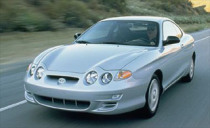
Hyundai Tiburon
The other day I was watching TV and happened to see a Hyundai car commercial (a natural thing to see, considering the show I was watching featured a Hyundai as one of the main character’s rides). It made me think of the Hyundai Tiburon I owned up until recently, when I traded it for a new Toyota Prius C. And I found myself saying: “Sometimes I miss my Tiburon. That car was sexy. There’s nothing sexy about my new Prius.”
But upon giving it further thought, I realized I had to take that statement back. Because, like so many other things, sexy is much more than the outside package.
Sure, the Tiburon looked sexy. I bought the 2000 model because it emulated the original prototype for the Tiburon, unlike the previous models. And for a hatchback, you couldn’t get a car much prettier. It had fluid and sensuous lines, a hood and side profile that reminded you of the Mach 5 (without the points over the front fenders), great ergonomics, and those sexy round “shark-eye” headlights… mmmmm.
But under the skin was nothing spectacular. In fact, it featured technology that had been packaged into automobiles for pretty much forty years with little real change. The interior was the same, with very familiar dash and controls, nothing that hadn’t been seen in cars for the last half-century. And the engine achieved the same mileage as the 20-year-old Datsun I’d traded for it.

Toyota Prius C
Compare this with the Prius C: On the outside, the car doesn’t look like anything sexy. In fact, I’ve struggled to figure out what this car does remind me of, and so far, the best I’ve been able to come up with has been a pug. Pugs may be cute… but they’re sure not sexy.
But then you get inside, and you see what makes this car a pleasure: An interior that reeks of modern acoutrements, such as map technology, communications features and integration with today’s personal media devices, and upgradable to add even more bells and whistles; a dashboard that monitors your car, and your driving, like never before; and under the hood, a hybrid gas-electric engine that beats the pants off of gas-powered cars in terms of efficiency, averaging almost 20 more miles per gallon than the Tiburon and being almost as peppy. This is the stuff that the tech geek in me really appreciates: A car that’s keeping up with the latest technology.
It can be easy to just default to the obvious when it comes to snap judgements. But sometimes you need to look a bit deeper to see the real beauty and value of something. The Prius C may look like a smoosh-faced dog on the outside, but on the inside, it’s a lean, mean technological machine. And to a tech geek, that is sexy.


August 14, 2012
The Interview

Steven Lyle Jordan, author and futurist
The following comprises an interview script I wrote for fun… because I don’t expect to get a chance to film it, unless I use puppets or something…
Steven Lyle Jordan Interview Video
Int. Hallway
Steven Lyle Jordan (SLJ) walks down a deserted hallway with numbered doors on either side. He is beside himself in excitement, and turns to speak over his shoulder at an unseen audience.
SLJ
This is so exciting: My first televised interview! When this airs, it should give my books sales a serious kick in the ass! And can you imagine being interviewed by anyone better than…
SLJ notices the door he’s looking for.
SLJ
Okay, here’s room 6. Here we go!…
INT. Studio
SLJ steps into a small room with two chairs, two cameras, each pointing at one chair, a few lights, and no one there.
SLJ
Oh… am I early? The schedule said…
SLJ notices a note on the chair facing him. He crosses over, picks up the note, and proceeds to read it aloud with rising degree of surprise.
SLJ
Dear Steven, sorry about this but just got a call to interview Amanda Hocking… feel free to do interview anyway…
SLJ looks about, confused. An interview with one person?…
SLJ
Just sit in the chair and answer the questions on this sheet as if I’m asking them to you. We’ll film my part later in post. Good luck!
SLJ looks at the chair and cameras, and eyes the rest of the room as if this is some kind of sick joke. After debating, he finally sits down in the chair, looks awkwardly at the camera next to him pointing to the opposite chair, then looks at the opposite chair.
studio: empty chair
POV fixates on the empty chair for a few moments, as if expecting it to do something.
studio: SLJ
SLJ stares at the chair for a moment in confusion, then looks down at the paper, reading. After a moment, he looks hesitantly back at the opposite chair, and prepares himself to try to get through this farce.
SLJ
Uh… okay, uh, Hi… it’s nice to be here.
SLJ pauses, looking back down at the paper and reading the next question.
studio: empty chair
POV fixates on the empty chair for a few moments, as if it is saying something.
studio: SLJ
SLJ looks back up from the paper… he’s trying to get the hang of this.
SLJ
Yes, uh, the convention’s been going great! There’s been a lot of interest in my Verdant and Kestral series—series-es?—and the people I’ve met have been very friendly.
SLJ pauses, looking back down at the paper and reading the next question.
studio: empty chair
POV fixates on the empty chair for a few moments, as if it is saying something.
studio: SLJ
SLJ
Well, the numbers aren’t huge… yet. After all, I’m still a relatively unknown author out there. But I’m hoping that more appearances like this one will be a big boost to my notoriety down the line.
studio: empty chair
POV fixates on the empty chair for a few moments, as if it is saying something.
studio: SLJ
SLJ
Right. I love science fiction stories for their willingness to explore the elements of science and nature, and how they affect the human condition. They can be intellectual, they can be fun, and they can be very enlightening.
studio: empty chair
POV fixates on the empty chair for a few moments, as if it is saying something.
studio: SLJ
SLJ
Yes, it’s true: Science fiction isn’t the hottest of genres right now…
studio: empty chair
POV fixates on the empty chair for a few moments, as if it is saying something.
studio: SLJ
SLJ
Uh, yes. I like writing, but the primary reason for me to do it is to supplement my income. I put a lot of pride and effort in my writing, and that’s worth something—
studio: empty chair
POV fixates on the empty chair for a few moments, as if it is saying something.
studio: SLJ
SLJ
I’ve considered it. But nothing attracts me the way science fiction does. It’s always been—
studio: empty chair
POV fixates on the empty chair for a few moments, as if it is saying something.
studio: SLJ
SLJ
Oh yes, I know how popular vampires and zombies are…
studio: empty chair
POV fixates on the empty chair for a few moments, as if it is saying something.
studio: SLJ
SLJ
No, I really have no interest in writing about vampires and zombies, no matter how profitable they might be in the short term.
studio: empty chair
POV fixates on the empty chair for a few moments, as if it is saying something.
studio: SLJ
SLJ
No, sorry; no magicians or dragons, either—
studio: empty chair
POV fixates on the empty chair for a few moments, as if it is saying something.
studio: SLJ
SLJ
Nor elves or hobbits—
studio: empty chair
POV fixates on the empty chair for a few moments, as if it is saying something.
studio: SLJ
SLJ is getting visibly upset.
SLJ
No, no magic dragons ridden by vampires chasing zombie elves!…
studio: empty chair
POV fixates on the empty chair for a few moments, as if it is saying something.
studio: SLJ
SLJ
Hey, those things just don’t interest me; and I believe there are plenty of readers out there who don’t want to read fantasy…
studio: empty chair
POV fixates on the empty chair for a few moments, as if it is saying something.
studio: SLJ
SLJ
No. Not even for a million sales. So can we get back to what I do write?
studio: empty chair
POV fixates on the empty chair for a few moments, as if it is saying something.
studio: SLJ
SLJ calms down and resumes the interview.
SLJ
Yes, the Verdant series is about the aftermath of the eruption of the Yellowstone Caldera, which many people realize is a supervolcano in the middle of our country which, in fact, is considered overdue to erupt.
studio: empty chair
POV fixates on the empty chair for a few moments, as if it is saying something.
studio: SLJ
SLJ
No, it erupts on its own—
studio: empty chair
POV fixates on the empty chair for a few moments, as if it is saying something.
studio: SLJ
SLJ
No, no magicians cause it!
studio: empty chair
POV fixates on the empty chair for a few moments, as if it is saying something.
studio: SLJ
SLJ
No, it wouldn’t be a better story! Verdant Skies is a scientifically plausible story! It—
studio: empty chair
POV fixates on the empty chair for a few moments, as if it is saying something.
studio: SLJ
SLJ
Are you serious? Everyone should care about science! Science gives us everything in our modern world! It gives you that camera to record this interview and broadcast it around the world in an instant!
studio: empty chair
POV fixates on the empty chair for a few moments, as if it is saying something.
studio: SLJ
SLJ
Yes, faster than a vampire can fly—will you stop that! There are no vampires!
studio: empty chair
POV fixates on the empty chair for a few moments, as if it is saying something.
studio: SLJ
SLJ
Oh, now we’re doing IRS jokes? Look, let’s get back on track, or this interview is over.
studio: empty chair
POV fixates on the empty chair for a few moments, as if it is saying something.
studio: SLJ
SLJ visibly calms down, as if satisfied the interview is turning around.
SLJ
Okay… yes, the Kestral series is much more light-hearted adventure SF. It’s about a military officer who’s discharged from the military through no fault of her own, so she begins a new life as a freighter captain with a small crew.
studio: empty chair
POV fixates on the empty chair for a few moments, as if it is saying something.
studio: SLJ
SLJ
Well, it was originally inspired by Star Trek, but it actually reads more like a cross between Trek and Firefly—
studio: empty chair
POV fixates on the empty chair for a few moments, as if it is saying something.
studio: SLJ
SLJ
Yes, I’ve heard Firefly called “cowboys in space.” But the characters in Kestral aren’t like cowboys.
studio: empty chair
POV fixates on the empty chair for a few moments, as if it is saying something.
studio: SLJ
SLJ
Because they live on their freighter, picking up freight jobs for money and incidentally getting caught up in adventures on the planets they visit. In their first adventure, they help the government to get a needed cure for a virus to a planet before the creatures that spread the virus can catch them. In the second, they help in a labor dispute on a planet that has apparently come alive. And in the third, they—
studio: empty chair
POV fixates on the empty chair for a few moments, as if it is saying something.
studio: SLJ
SLJ
No, there are no Klingons. Most of the galaxy is populated by humans, but some of them have been genetically altered to be able to live on the many terraformed worlds—
studio: empty chair
POV fixates on the empty chair for a few moments, as if it is saying something.
studio: SLJ
SLJ
Yes, altered to make them stronger, or lighter, or more tolerant to atmospheric gasses, that kind of thing.
studio: empty chair
POV fixates on the empty chair for a few moments, as if it is saying something.
studio: SLJ
SLJ
Yes, they look like humanoid aliens in some cases.
studio: empty chair
POV fixates on the empty chair for a few moments, as if it is saying something.
studio: SLJ
SLJ
The difference is that Star Trek’s aliens were all humanoid, and the likelihood that aliens will be like humans is almost impossible.
studio: empty chair
POV fixates on the empty chair for a few moments, as if it is saying something.
studio: SLJ
SLJ
It’s a big difference! It explains why my characters from different planets all speak the same languages, can eat the same things, have a shared culture for communication…
studio: empty chair
POV fixates on the empty chair for a few moments, as if it is saying something.
studio: SLJ
SLJ
Star Trek did it because they wanted to make the stories easy to follow. And cheap to make. That doesn’t make it realistic. My stories, on the other hand, are very realistic in that—
studio: empty chair
POV fixates on the empty chair for a few moments, as if it is saying something.
studio: SLJ
SLJ
Uh… well, yes, ships use faster-than-light drives to get from planet to planet…
studio: empty chair
POV fixates on the empty chair for a few moments, as if it is saying something.
studio: SLJ
SLJ
That’s true: I believe faster-than-light drives will be forever out of our reach. The power requirements are flat-out impossible, even if there wasn’t the limitation of the speed of light.
studio: empty chair
POV fixates on the empty chair for a few moments, as if it is saying something.
studio: SLJ
SLJ
I use it for poetic license, basically. It’s become so common in science fiction that no one bothers to question it; so, for the Kestral stories, I used it, too.
studio: empty chair
POV fixates on the empty chair for a few moments, as if it is saying something.
studio: SLJ
SLJ
Because I didn’t want unrealistic aliens and unrealistic worlds! I wanted it to be as realistic as possible—
studio: empty chair
POV fixates on the empty chair for a few moments, as if it is saying something.
studio: SLJ
SLJ is getting exasperated again.
SLJ
—with warp drives!
studio: empty chair
POV fixates on the empty chair for a few moments, as if it is saying something.
studio: SLJ
SLJ
Yes, it’s inconsistent, but—
studio: empty chair
POV fixates on the empty chair for a few moments, as if it is saying something.
studio: SLJ
SLJ
I’m giving readers what they want to read! I don’t see—
studio: empty chair
POV fixates on the empty chair for a few moments, as if it is saying something.
studio: SLJ
SLJ
No, they don’t fight space dragons!! —all right, that’s it!
SLJ surges out of his chair and throws the paper on the floor.
SLJ
F this noise! If I’d wanted to be poked fun at, I could have logged onto SFFWorld!
SLJ storms out of the room, grumbling obscenities under his breath, and slams the door shut behind him. Camera pans down and zooms onto paper. Seen clearly under the instructions is the name of the interviewer: Stephen Colbert. Unseen, the door is heard to open, and footsteps approach slowly and evenly. A hand picks up the paper, and a smug voice is heard.
Stephen Colbert
Couldn’t have done better myself…


August 10, 2012
“I’m sorry you have no friends.”

Steven Lyle Jordan, author and futurist
Years ago, my wife and I bought our house in Maryland. Our real estate agent was a man whom we’d met at a house sale elsewhere, and we liked him so much that we’d asked him to represent us; with his help, we found a great house, and have been more than satisfied with it to this day.
One day, a few months later, we chanced upon him, and after mutual greetings, he said to us: “I’m sorry you have no friends.” It took us a second to realize he was sarcastically referring to his hope that we would have recommended him to our friends in the market for new homes, thereby bringing him fresh business. We didn’t take it personally, of course—and at the time, we didn’t happen to know anyone who was house-hunting, so we couldn’t have helped even if we’d wanted to—but the point was taken.
Fast-forward to years later, and I find myself trying to sell novels in this hard-to-penetrate entertainment market. Although I’ve tried many things to promote my novels, one of the most oft-repeated comments I’ve heard from writers and readers is that only one method of promotion is really effective in this day and age: Word of mouth.
And suddenly I find myself reflecting on my real estate agent, and his comment to me. When I started writing, I’d hoped that I could generate enough word of mouth to get my sales going, and growing, steadily over time. Alas, this didn’t happen. So I’m making a renewed effort to try to get word of mouth going… and naturally, this is where you come in. But instead of sarcastic remarks, I’m hoping a clear and honest suggestion will work better.
Though I will try to hit numerous venues, I’m hoping that you, my customers, will chip in. I’m asking you to mention me to your SF-reading friends. I’m asking you to go to the book retailers like Amazon, Barnes & Noble, Smashwords and their affiliates, as well as any blogs or SF-related sites you frequent, and leave reviews of my books. I’m asking you to forward links to my books site to anyone who you think might be interested. No need for brow-beating or histrionics… just mention this author you’ve read, and that they should check him out.
Hopefully your efforts will do better for me than I did for my real estate agent!


August 6, 2012
Curiosity and efficiency
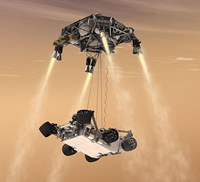
Curiosity Rover landing (NASA)
I stayed up the other night to watch NASA’s Curiosity Rover descent onto the Martian surface. Well, it wasn’t so much watching Curiosity… it was watching NASA personnel reacting to the telemetry that told them what Curiosity was doing. In some ways, it’s like watching a sports announcer calling the game, instead of actually watching the game. But hey, with NASA, that’s the way it works.
Though it’s been awhile since I watched a NASA event, much less stayed up late to see one, this one fascinated me because it was a landing design unlike anything NASA had done before: Using a “skycrane” platform to hover over the surface, lower the rover to the ground on cables, then cut loose and land elsewhere. If you haven’t seen the simulations of how it should (and apparently did) work, you should.
But there’s something else that fascinates me, about this moment, and about NASA: They have become a textbook model of American efficiency.
When NASA began its First Mission, it was during the Cold War, when so much of politics was about posturing to other nations like Russia and China. The Apollo program was a response to the Russian placement of Sputnik into Earth orbit, and the suggestion that they might put a man on the Moon. The United States’ response to that perceived threat was to throw everything it could into a program designed to get there first. Apollo became the jewel of the nation’s crown, and the government poured every conceivable amount of resources and manpower it could into pulling off the impossible. It worked, allowing the U.S. to place its bootprints on the Moon and return safely to the Earth, something other superpowers have yet to do.
But the Cold War ended, and suddenly, NASA had no mission. It quickly found it had to reinvent itself, from an organization designed for grandstanding to the world, while incidentally doing some science projects (as long as we were there), to an organization dedicated to the science projects, and cooperation instead of grandstanding (as long as the partners are there). This has defined NASA since Skylab, and it’s been a good Second Mission for them.
Unfortunately, NASA’s Second Mission was never as popular as the First Mission with the public, or with the politicians who supported it. Scientific research, like science fiction, has never been taken seriously by the majority of the American public or their representatives. And as impressive as it might have been, it paled in comparison to the transporter beams, time machines and androids of television.
With the wane in popularity (and no other countries to one-up), NASA found its budgets sliced to the comparative bone. For years, it struggled along with barely enough money to sustain itself, much less launch any new and major projects. But here is where NASA found its second wind and figured out how to make lemonade from the lemons.
Put simply, NASA discovered the philosophy of Doing More With Less. Their realization harkened back to Isaac Asimov’s Foundation series, wherein a civilization isolated and with limited resources learns, out of necessity, to engineer miniature machines as powerful as its big older-generation machines. NASA put this new philosophy to the test by creating small robotic devices capable of doing tasks that humans would have been hard-pressed to do. Then they launched them into space to see what we could see. To date, NASA machines have logged thousands of days in the most hazardous and unforgiving environment known, received gigabytes of data about our sister planets, and one of our satellites is at this moment leaving our Solar System, the furthest-afield man-made object in existence besides radio waves.
It is this philosophy that has allowed NASA to send multiple robotic probes to Mars over the years, using different methods of flight, landing, exploration and control each time. And though every mission has not been a success, the overriding value of robotic probes is that losing one doesn’t mean a dead astronaut. And we have learned so much from the successful ones that the value of putting a man on another planet will forever be debated against doing it with robots.
I’ve occasionally found myself wondering, and even debating, whether NASA’s efforts are learning anything that can actually be applied to our lives here on Earth… not to mention the corollary question, how much does it matter as long as we’re learning something? Perhaps this line of questioning is ultimately pointless.
But there’s one thing anyone who considers NASA must agree: They have learned how to do so much more, with so much less, than perhaps any organization on the planet. NASA has become the American poster child for efficiency, cooperation and the pure desire to Get It Done. Even if they discover nothing more, they should be lauded for that.


August 2, 2012
Excerpt from Chasing the Light: A serious and romantic look at our near future
 Please enjoy an excerpt from Chasing the Light, a novel of the near future.
Please enjoy an excerpt from Chasing the Light, a novel of the near future.
Chasing the Light is a “boy meets girl, boy loses girl, boy returns to find girl and make his fortune” story, set in the United States of a very realistic near-tomorrow. The young lovers, Tom Everson and Doña Navarra, are forced apart due to circumstances beyond their control, and Tom risks everything to be reunited with Doña.
In fact, the story could be said to begin any day now, as it is kicked off by violent events caused by the energy crisis and the oil industry’s contentious activities to dominate the energy landscape. The United States is on the brink of serious, possibly violent changes that will be triggered by Peak Oil and come to impact the world. Transportation, security, automation, politics and social systems will be as strongly impacted as energy, and some aspects of the U.S. may be barely recognizable when it is over.
When this book was written, it featured two emerging technologies, one of which has grown into a major portion of the computer industry. The digital scrapbook concept, a portable personal electronic device controlled by touchscreen and designed to store and sort data, memos, articles, photos and media in customizable folders and groups, is now popularly known as the iPad or tablet computer. But possibly even more interesting is the solar antenna technology, a system whereby a nanoscale “antenna” can convert infra-red light, a band of light that today’s solar cells cannot use, into electric power. The nano-antenna can be added to existing solar cells, increasing their output and keeping them cool in the process, which will extend their useful life and prevent the power loss caused by overheated solar cells.
The technology of the rest of the story is based on existing or developing technology. This is real science, not fanciful notions of a future society saved from its demise by cold fusion, zero-point energy or benevolent aliens.
The story also investigates the impact of the energy crisis on a small town in Maryland, a real town in which I lived for years. Gaithersburg, Maryland, with its proximity to Washington, DC, has been a representative model for suburban growth and development since its incorporation. Its development will continue to reflect national trends, which makes it an ideal window on the future impact of America’s energy situation.
But most importantly, the story is about the lives of Tom and Doña, their friends and family, and the typical Americans living typical lives in a future energy-evolving U.S. nation. Far from being dystopian, Chasing the Light gives all of us confidence that the American way of life will continue on, even in the face of energy adversity.
Enjoy the excerpt.


July 28, 2012
Replacing the hated “warp drive”
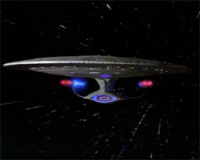 It’s been a pet peeve of mine for years. I researched for years to find a way around it, and wrote two books based on my solution. It’s one of the things that threatens to turn a perfectly good science fiction story to fantasy in an instant. It’s warp drive. And I hate it.
It’s been a pet peeve of mine for years. I researched for years to find a way around it, and wrote two books based on my solution. It’s one of the things that threatens to turn a perfectly good science fiction story to fantasy in an instant. It’s warp drive. And I hate it.
Warp drive was a concept created by writers of science fiction who knew that the distances between stars were too immense to allow humans to travel about and actually live to reach the other side. It provided for romantic stories about traveling from star to star as easily as we sail from shore to shore, in great and powerful ships run by military discipline much like their seafaring ancestors. It gave us Forbidden Planet, which begat Star Trek, and the “new planet every week” television show.
And yes, I’ve done it myself. One of my most popular series, The Kestral Voyages, applies a warp drive system much like that featured on Star Trek, giving me a Galarchy of planets and a commercial network for my heroes to ply the stars. Lots of room for romantic adventure. Easy. Familiar. Understandable.
The problem is, it’s a crock. It won’t work. Why? Because, however you plan to do it, it would require more power than any human-built construct could ever hold, or any engine could ever process. We’re talking on the order of stellar energy outputs every second… except that, wait, even that’s not enough. And you wouldn’t be able to see ahead of you… or detect and move unexpected obstacles before you run right into them. It’s suicidal as well as impossible.
Most SF writers know this… or they choose to ignore it. Some of them may believe that, like the sound barrier, we just have to push hard enough to “break through” it and the rest is cake. Others like to believe that yes, we can commandeer the power required to move faster than light, once we figure out how to control anti-matter or zero-point energy. Some think we can gain the ability to control time, or to insert our ships into “hyperspace,” another dimension that allows you to travel to other planets but by a shorter route (because, in hyperspace, everything is apparently much closer together). Some delight in filling pages with jargon that pretends to solve the inherent impossibilities of the task. And some just like to say “Ah, what the hell… warp speed, Scotty!” and ignore the contradictions and impossibilities inherent in what they’re doing. (In terms of the Kestral books, that last writer is me.)
It’s a cheap literary shortcut, as cliché as the cavalry coming over the hill in the nick of time and the detective who never gets hit by a fusillade of bullets, but hits his mark and downs his crook with one shot every time. And readers who wouldn’t accept elves and unicorns in their stories open wide and swallow warp drives whole, then mumble “Thank you sir, may I have another?” through jargon-stuffed mouths.
So why do we do it? Is it impossible to write science fiction without resorting to that stereotypically-impossible trope? And is it impossible for readers to appreciate a story without it? I don’t think so; it’s just that it’s been with us for so long, we don’t really see it anymore. It’s become a sort of blind spot, the ever-present cowboy hat on the hero’s head, part of the landscape.
And it self-supports a certain type of story, like a tree on a hill that can threaten the hero with a hanging—how can you threaten to hang the hero if there are no trees? If we want to write a story in which the hero is threatened with hanging, it’s just too easy to write in some trees somewhere.
When I decided to write a realistic SF story taking place in space, I researched possibilities of traveling among the stars that didn’t involved fictional alternate dimensions and impossible amounts of power; something that actually seemed plausible.
As a long-time reader of Scientific American, I struggle my way through most of the articles involving one aspect or another of quantum physics on a regular basis. To be honest, not a few of them left me in the dust, and many others left as many questions as they answered (assuming I even knew what the questions were!). But I managed to slog through most every article that tied quantum physics into the makeup of our universe… and suddenly, certain things started to add up. I went back through my magazines, re-read articles, started taking notes, and Lo and Behold, a possible method of intergalactic travel suitable for believable science fiction began to suggest itself!
The concept that the universe has a “quantum frequency,” unique at every distance from the center of the universe, is borrowed from the Scientific American June 2005 article entitled “Inconstant Constants.” It identifies a Fine Structure Constant (alpha), which defines the strengths of the interactions of elementary particles, and which suggests different interactions at different degrees of alpha… in other words, a unique frequency at any specific radius from universal center. This is a function (one among many) of the expanding universe around us.
This detail meshes well with the Hubble constant, which indicates that the universe is expanding faster where it is further away from universal center than it is closer in. The differing expansion rates cause measurable changes in light frequencies, creating a seeming paradox of objects that, from our point of view, can travel “faster than light.” These observations are described in the Scientific American March 2005 article “Misconceptions About the Big Bang.”
These, and lesser articles in SciAm and other sources, were my basis for the “quantum frequency” that a signal-broadcasting system could manipulate on a local level, essentially altering the frequency of anything within its influence.
Couple this with many experiments in accelerating quantum particles, resulting in their “disappearance” from one position and “reappearance” in another position. In these experiments, the quantum particles seem to traverse a distance faster than light could travel. Don’t ask me how any scientist manages to tell one quantum particle from another, but they are certain these particles are one and the same… meaning that they are covering a distance faster than light. Most scientists believe they are traveling through another dimension, in an effect they call “quantum tunneling.”
I tied “quantum frequency” and “quantum tunneling” together by suggesting that quantum particles, having a new quantum frequency forced upon them, will automatically “tunnel” to the distance from universal center that corresponds to that quantum frequency. The demonstrated effect of “quantum entanglement” suggests that, if the particles all “tunnel” at the same time, they will maintain position and state with each other, resulting in a collection of particles arriving in the same overall state as when they departed.
The concept of a “jump drive” creates a very different dynamic for a space story: No longer do the characters sail a vast, black ocean between stars, like their ancestors did back on Earth; they now set some equipment, flip a switch and they’re there. The tropes of long isolated voyages and vast distances common to stories in our past no longer apply. The old romance is gone.
But that’s okay: We know how to make new romances. Science fiction is about investigating and revealing the differences in our lives that science will one day bring upon us. In the same ways that we interact, communicate, work, play, learn and maintain ourselves differently with the help of scientific discoveries, so we can expect to travel differently through space. The rebooted Battlestar Galactica showed us a jump drive, and a way of life built around it, and it was not sterile or boring. It was different… the essence of science fiction.
We can stop treating space stories as extensions of Horatio Hornblower, and imagine them in a new way, a world that doesn’t depend on the old notions of travel, and invents brand new ones. It’s time to leave the old centuries’ notions behind, and see where the new centuries will take us.


July 27, 2012
What’s going on

Steven Lyle Jordan, author and futurist
It’s no secret that I’ve been holding off from writing anything new lately, as I’ve been concentrating on the flagging sales of my existing books. I’ve also been spending time discussing the issue on various forums. Unfortunately, most of the advice I’ve gotten hasn’t been very helpful—mostly variations of “suck it up and write, already” and “you’re crazy to want money out of your books.”
Though many of the responses have been essentially negative, I haven’t been chased out of the writing biz yet. Nor have I changed my mission, which is to create a stable of books that contributes in some small to my bottom line. However, I have also not altered my plans to work on improving sales of my existing books; if I can’t get the present ten books, many of which have 4-5-star reviews, to sell in this marketplace, I just can’t see a good reason to write more books that won’t sell.
So, the mission continues: Writing is taking a hiatus while I work on marketing and promotion; and if anyone has some good ideas for my marketing and promotional efforts, helping me to get back on track sooner (and that includes any efforts made to spread the word to new readers), there may be something in it for you.
Carry on.



